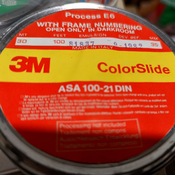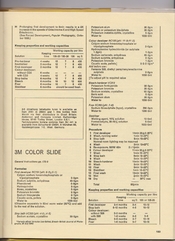Very interesting thread. I've slowly being doing the same process, going through my grandmother's old negatives and scanning them. Her negatives go back to the 1950's. Recently just did a few in color, and I was wondering the same thing... what type of film? Mine appears to be the same as the OP, but in smaller format. Measures just slightly less than 2" x 2". I'm guessing this is 127 film, not sure of the camera. Maybe a Brownie? Anyway, for reference, I know for certain that this image was taken in June, 1952. You'll notice that it has a single hole punched near one edge of the film. All other negatives have this same hole punched, in nearly the same location, so my guess this was done after developing.














